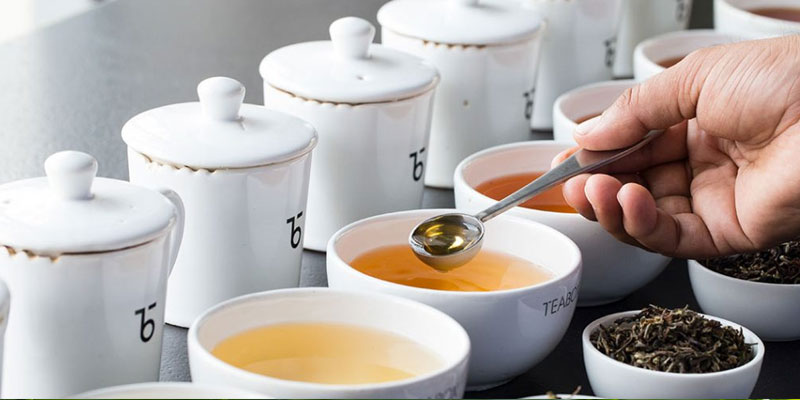How is tea tasting done?

Tea tasting is an art and a science, requiring keen senses and a deep understanding of the beverage. This process, known as “cupping,” is used by professionals to evaluate the quality, flavor, aroma, and appearance of different teas. Here’s a step-by-step guide to how tea tasting is done:
- Preparation: The first step in tea tasting is to prepare the tea samples. Each type of tea (black, green, oolong, white, or herbal) is steeped separately using specific parameters such as water temperature and steeping time. Typically, 2-3 grams of tea are steeped in 6-8 ounces of water for 3-5 minutes.
- Observation: Once the tea is brewed, the appearance of the dry leaves, wet leaves, and the liquor (the liquid tea) is closely observed. The dry leaves are examined for their shape, color, and consistency, while the wet leaves reveal more about the tea’s quality and processing. The liquor’s color can range from pale yellow to deep amber, providing hints about the tea’s strength and flavor profile.
- Aroma: The aroma of the brewed tea is an essential aspect of tea tasting. Tasting begins by inhaling the scent of both the dry and wet leaves, followed by the liquor. The aroma can reveal floral, fruity, earthy, or smoky notes, which are crucial for identifying the tea’s character.
- Tasting: The actual tasting involves slurping the tea to aerate it, which helps in spreading the flavors across the palate. Professional tasters use a spoon and make a loud slurping sound to enhance this process. This step assesses the tea’s flavor, mouthfeel, and aftertaste. Notes such as sweetness, bitterness, astringency, and umami are evaluated.
- Spitting: To avoid caffeine overload and palate fatigue, tea tasters often spit out the tea after tasting. This allows them to taste multiple samples without becoming overwhelmed.
- Scoring and Recording: Each aspect of the tea—appearance, aroma, taste, and aftertaste—is scored and recorded. Tasters often use standardized forms to ensure consistency and accuracy in their evaluations.
Tea tasting is a meticulous process that requires practice and expertise. It’s a crucial part of the tea industry, ensuring that only the finest teas make it to your cup. Whether you’re a professional or a tea enthusiast, understanding the nuances of tea tasting can enhance your appreciation for this ancient beverage.
